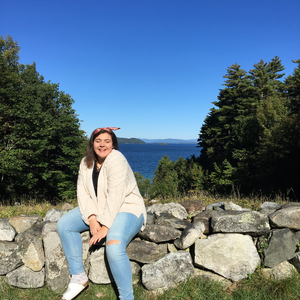Happy Plastic Free July! Started a few years ago by a handful of planet-loving Australians, this nonprofit encourages people to plastic fast during the month of July, and this year the plastic-free festivities have exploded around the world. Their website is full of resources on how to live your best plastic-free life. One of their number one tips is to say no to single-use coffee cups, or just make your coffee at home. For us college folk making coffee at home in our own reusable container usually means turning to a Keurig or other single cup machines because they’re fast, easy, and make just the right amount. However, they are also hard to recycle plastics, and Plastic Free July is all about remembering that reduce should be the first step, reusing and recycling are second options. So let’s retire bad coffee and wasteful pods, and give these single-use plastic-free coffee methods a try!
1. French Press
This brew method is my favorite because there are so many uses for your pot. You can make hot coffee, cold brew (more on that later), or even a huge mug of tea! You will require a hot water source such as a kettle, but if you eat ramen you can support a French Press habit. This one from Target is made mostly from glass and comes highly recommended. Plus, as this Spoon piece points out – the filter is built into the French Press meaning the only waste after brewing your coffee are the ground themselves, which you can easily compost.
Alton Brown, my food hero, has a no-frills playbook for a great cup of coffee every time. His secret? A pinch of salt. My secret? Stealing chopsticks from dining services because I don’t have time or money for wooden spoons (DO NOT STICK METAL IN A HOT GLASS CONTAINER BEFORE YOU’VE HAD YOUR MORNING COFFEE. We’re all just asking to break something.)
2. Chemex
For the more coffee-snobbed of us, I bring you the Chemex, the next level of homebrew. These have been around since the 40’s, you can even spot one on Monica’s counter, and I love them because they will just look beautiful sitting on top of your dorm fridge. Though this does require quite a few more tools than a method of comparable difficulty – the AeroPress– the Chemex is made entirely of glass which is why I recommend it for Plastic-Free July.
Here’s a video from Stumptown Coffee to wrap your head around what it takes to brew a Chemex cup, though there are certainly less involved methods if you’re not feeling like busting out a scale for your morning cup (though it is quite impressive).
3. Cold Brew
If you think about it, cold brew is really the most eco-friendly coffee method because it only requires room temp water, meaning you don’t have to use any energy to heat the water. However, given the recent straw debate (to which I say, let’s get better at bringing reusable cups everywhere) cold drinks are taking a lot of heat. So if you can master making your own there’s no need to tempt the plastic demon.
Your all glass french press is an excellent option for pour ready cold brew. It’s what I’ve been drinking through the last heat wave, though I find that it has a bit of coffee sediment at the bottom, much like a hot cup of french press. Still, it certainly makes yummy cold coffee if that’s what you’re into and doesn’t want to buy an extra piece of equipment. I’ve been using these guidelines from HuffPost for my French Cold Brew.
However, if you really can’t deal with a little coffee silt at the bottom of your glass, or feel like diversifying your coffee machines, might I suggest the Toddy Brewing System, my cold brew method of choice. I love Toddy because it makes a cold concentrate that is less acidic than traditional brew methods and has more caffeine. This means you can make plain iced coffee by mixing 1 part Toddy with 2 parts water, or a latte subbing out the water for milk. A full Toddy recipe will last me at least two weeks, sometimes longer. While the system is essentially a plastic bucket with a filter and a stopper – not ideal for Plastic Free July – it is dorm accident proof and treated me well this past year at school. Making your guests coffee is a cool adult thing to do. Being able to whip out iced lattes is the next level.
I am certainly not an expert in environmental studies and waste impact. Too sad of a major for me. So I don’t really know what I’m talking about when we’re thinking about the long range consequences of the daily decisions that we make. And I have my blind spots, but I see my morning coffee as something I have power and choice over. I am grateful for the privilege which accompanies me getting to make that choice, instead of having it made for me. So if you are willing and able to make small daily decisions to reduce instead of recycle, I urge you to join me. Let us all make sure we have a right to be properly (and responsibly) caffeinated before being forced to navigate this crazy world of ours. Cheers.


